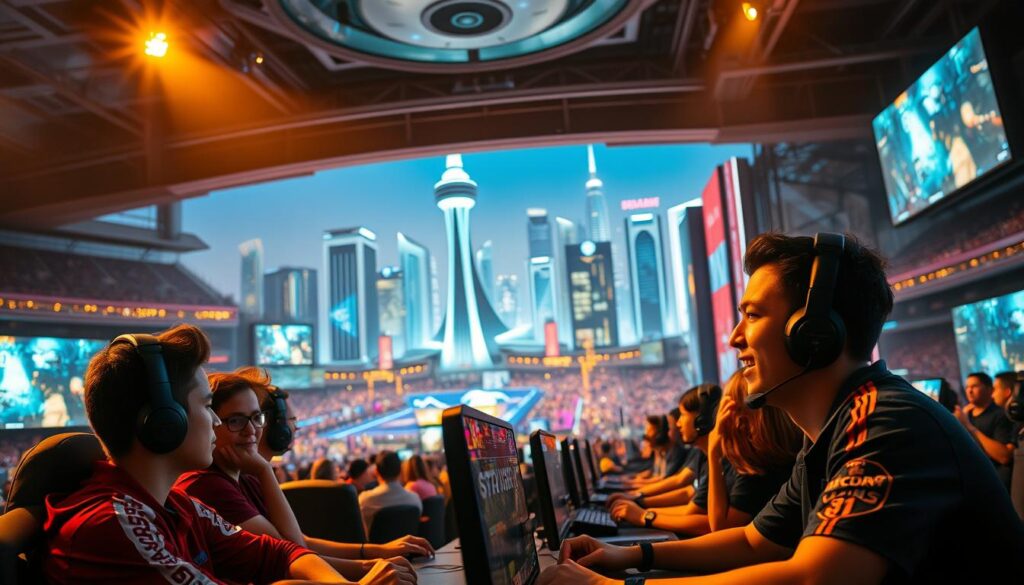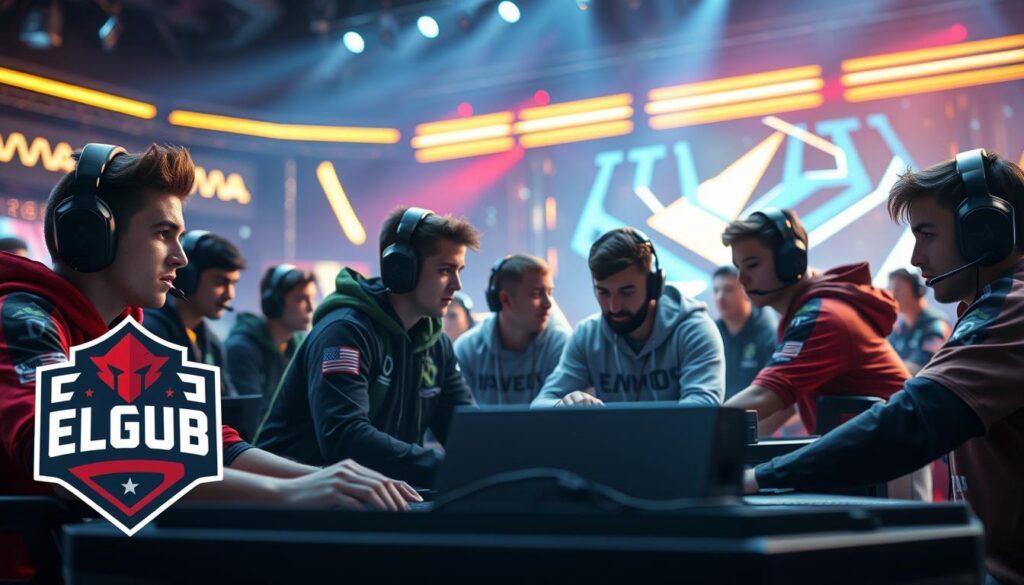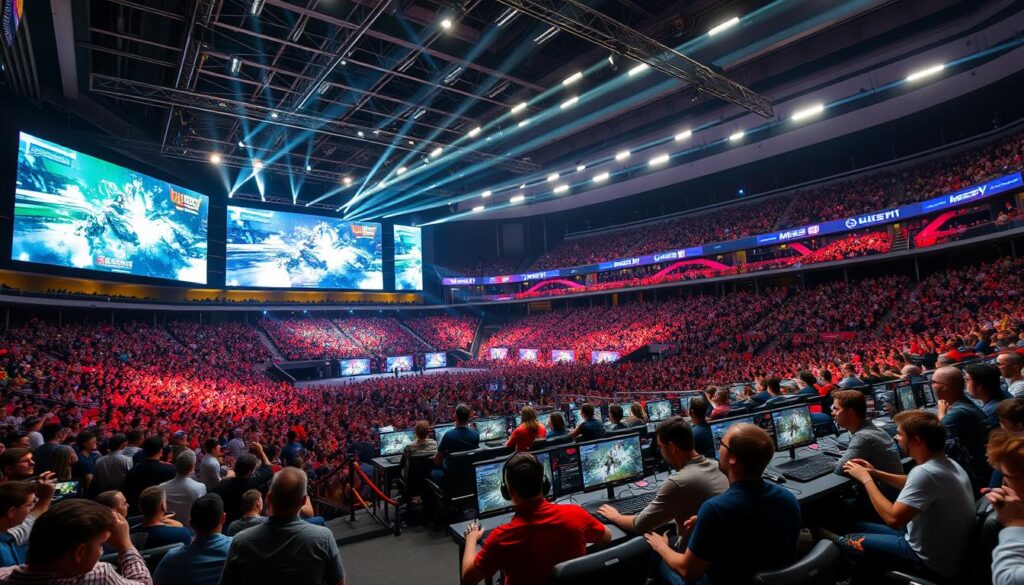Welcome to the digital Colosseum where 360 no-scopes replace gladiatorial combat and Twitch chat fuels modern spectacles. Think Rocky training montages, but with RGB keyboards and caffeine IV drips. This arena evolved from pizza-stained LAN parties to million-dollar tournaments faster than you can say “lag spike.”
Remember when your mom yelled “Stop mashing buttons!”? Today’s pros turn that button-mashing into frame-perfect artistry. Games like Valorant now demand the strategic depth of chess crossed with Navy SEAL teamwork. Street Fighter VI? It’s less about fireballs and more about reading opponents like Tolstoy novels.
Why does Faker – esports’ answer to Michael Jordan – earn more per headshot than most CEOs? Because live-streamed battles command audiences rivaling the Super Bowl. We’re talking careers built on APM (actions per minute) scores, not SAT results.
This isn’t just about reflexes. It’s neurological warfare where split-second decisions determine who lifts trophies and who becomes meme material. Want to level up from casual to contender? You’ll need the discipline of a concert pianist and the adaptability of a improv comedian.
Stick around as we dissect how basement warriors become stadium legends. Next up: why your mouse grip matters more than your handshake, and how to train like the pros without getting carpal tunnel by 25.
What Is Competitive Gaming?
Imagine a digital arena where quick reflexes and complex strategies are key. Competitive gaming, or esports, has grown from small gatherings to big events. It’s a $1.5B industry that’s changing the sports world.
- Grassroots Gladiators: Local events like EVO Championship, where sweat-drenched controllers meet hype crowds
- Corporate Coliseums: Franchised leagues (Overwatch League, Call of Duty League) with city-based teams and billionaire owners
- Digital Valhalla: Mega-tournaments like Dota 2’s The International, where $40M prize pools make Super Bowl payouts look like Monopoly money
“We’re not selling seats – we’re selling heartbeats per minute.”
South Korea’s PC bang internet cafés started it all in the ‘90s. They became the blueprint for:
- 24/7 training regimens stricter than Navy SEALs
- Celebrity players with fanbases rivaling K-pop idols
- TV networks dedicating entire channels to match analysis
The “git gud” mentality changed when sponsors saw the power of young gamers. Today, pros use:
- Sports psychologists to combat tilt
- Nutritionists optimizing reaction times
- Data analysts dissecting kill/death ratios like Wall Street quants
Forget pizza boxes – the new battlegrounds smell like Red Bull sponsorship deals and anti-glare gaming glasses. Whether you’re watching a Street Fighter showdown or analyzing esports strategies in League of Legends, one truth remains: in competitive gaming, your skill ceiling is just someone else’s floor.
Building Skills and Teamwork
Ever wondered why your solo play falls apart against teams? Competitive gaming is more than just talent. It’s about turning chaos into a well-coordinated effort. Let’s explore how pros make quick decisions that change the game.
Mechanical Mastery
Your mouse skills might be fast, but precision is key. Tools like Aim Lab help you find and fix your gameplay flaws. For example, mastering CS:GO smoke lines is essential for success.
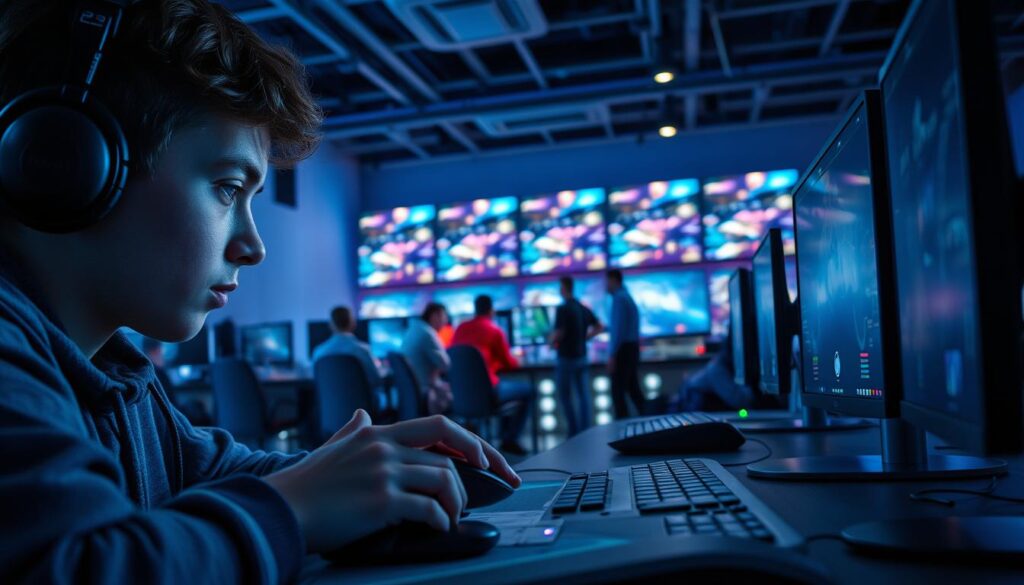
“Mechanics are your vocabulary. Strategy is your poetry.”
Communication Alchemy
Pro teams don’t just talk—they share vital information. A successful callout has three parts:
- Location (Grid D4, not “over there!”)
- Enemy status (Low health, ultimate ready)
- Request (Rotate, buy time, disengage)
Sports psychologists are key to avoiding team meltdowns. They help teams stay focused during critical moments. As one analyst said: “You can’t tilt if your comms sound like a SpaceX launch checklist.”
Here’s a pro gamer tip: Record your games. It shows the difference between good teamwork and chaos when played back at half speed.
Common Strategies in Esports
Do you think esports strategy is just about clicking faster? Think again. A League of Legends coach might plan draft phases like a chess master. A Rainbow Six Siege team might calculate operator purchases like MIT economists. The real battle is before the first shot is fired.
Meta-Game Dominance
Today’s meta is more than just what’s strong. It’s about guessing what your rivals think is strong. Take League of Legends‘ 2023 Worlds Championship:
- Teams banned Azir 89% of matches, not because he’s OP, but to force opponents into predictable mid-lane picks
- JD Gaming’s “flex pick” strategy confused draft analysts more than a Christopher Nolan plot twist
- Counter-matchups became psychological warfare – like bringing a flamethrower to a knife fight
Economy Management
Top teams manage in-game currency like Wall Street traders. In CS:GO, saving $500 for the next round can be the difference between success and failure. Here’s what happens:
| Game | Key Resource | Pro Tactic |
|---|---|---|
| Valorant | Credits | Force-buy Sheriff pistols on 2nd round |
| Rainbow Six Siege | Renown | Sacrifice defense gadgets for attack intel |
| Dota 2 | Gold | Stack ancients during lull phases |
When meta-reads meet financial strategy, magic happens. G2 Esports’ esports strategies guide shows how they turned $300 savings into wins. It’s like Moneyball, but with more headshots.
“Winning rotations aren’t about speed – they’re about arriving late to the party nobody knew you were throwing.”
In competitive play, the best strategies make opponents doubt their choices. Master the meta, manage your economy, and you’ll dominate like Tony Stark in a chessboxing match.
Psychology of Competition
What makes top esports players stand out? It’s not just about esports skills or quick reflexes. The real challenge is in their minds, where they face mental tests as tough as any game. Imagine staying calm with 10 million eyes on you—this is what competitive play does to your brain.
Tilt Prevention
Tilt isn’t just for pinball. In esports, it’s like your brain crashing during a game. Pros follow three key rules:
- The 90-Second Reset: Take deep breaths to calm down
- Error Autopsy Protocol: Review mistakes after the game, not during
- Meme Therapy: Watch funny videos to boost mood
“The difference between choking and clutching isn’t talent—it’s who packed a parachute when their amygdala went skydiving.”
Clutch Gene Activation
Ever curious how pro gamers handle pressure? Science reveals their brains buzz like a city at game time. They’ve:
- Turned fear into focus
- Created quick decision-making skills
- Learned to forget losses fast
Top players treat their minds like high-tech gaming setups. They fine-tune their brains, boost focus, and shield emotions. This way, they see pressure as fuel, not a problem.
Esports Spectators and Fans
The sound of a virtual crowd can be as loud as Madison Square Garden. Esports fandom is more than watching games—it’s a culture. Fans wear $200 hoodies and memes are valuable. Your Twitch chat skills are now faster than your typing.
Streaming Culture
Twitch chat moves at Warzone TTK speeds, creating fast-paced messages. When Shroud makes a no-scope AWP shot, fans analyze it like 2001: A Space Odyssey. Streamers study gamer psychology live.
“You don’t watch streams—you mainline pure, uncut gameplay dopamine.”
YouTube Gaming has made play-by-play commentary a $1.78 billion industry. The magic is in watching a 15-year-old explain esports strategies with precision. They do this while drinking energy drinks.
Merchandise Mania
100 Thieves merch drops sell out fast, like a Valorant one-tap. They’re not just clothes—they’re symbols of digital battles. Here are some stats:
| Product | Price | Hype Factor |
|---|---|---|
| Team Jerseys | $89.99 | Supreme Collab-Level |
| Gaming Hoodies | $129.99 | PS5 Launch Day |
| Collector Pins | $24.99 | Pokémon Card Frenzy |
This isn’t just shopping—it’s about showing loyalty. Fans who know Smash Ultimate frame data will wait hours for merchandise. Birthday gifts? Forget about it. Getting that Faze Clan mousepad is worth it.
Tips for Improving Your Gameplay
Want to go from a button-masher to an esports star fast? We’ve got strategies that will help you level up quickly. These pro gamer tips are like cheat codes for real skill gains. They work whether you’re playing ranked matches or getting ready for LAN tournaments.
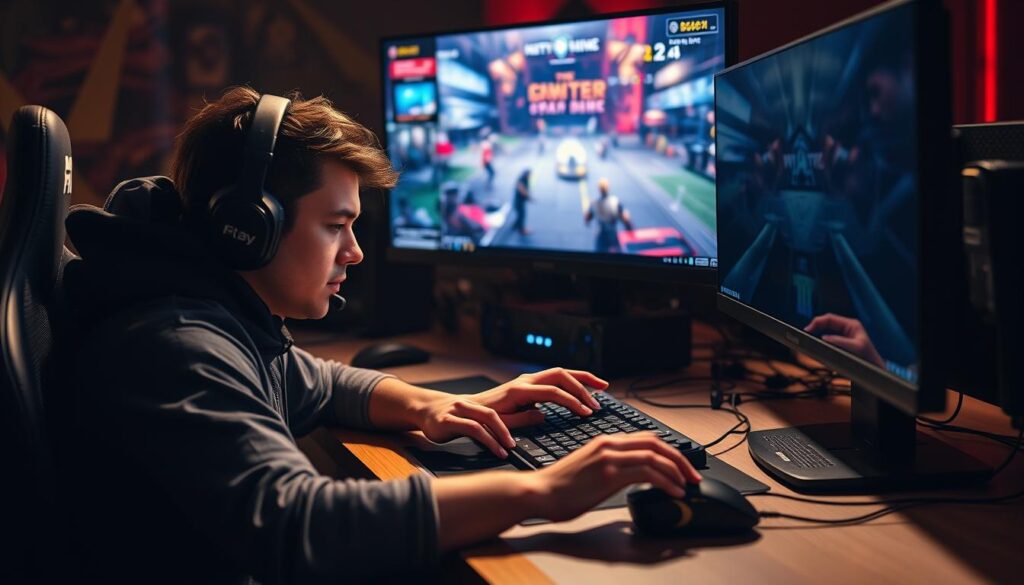
VOD Review Secrets
Watching replays is not just for fun. It’s like analyzing evidence. Look at three key moments:
- Death Cam Autopsies: Why did you die? Was it bad positioning or bad luck?
- Resource Mismanagement: Did you spend too much on a single item? Keep track of your resources like an expert.
- Micro-Decision Breakdowns: Was that risky move a good idea or a bad one?
“Reviewing VODs is like holding up a mirror to your gameplay soul. Sometimes you won’t like what stares back.”
Input Optimization
Your gear should help you, not hinder you. Let’s talk about settings:
| Component | Pro Standard | Casual Trap | Impact |
|---|---|---|---|
| Mouse DPI | 400-800 (CS:GO) | 3200+ (Meme Tier) | Pixel-perfect aim vs. spinning like a Beyblade |
| Keyboard Polling Rate | 1000Hz | 125Hz | Input lag difference of 8ms – enough to miss headshots |
| Monitor Refresh Rate | 240Hz | 60Hz | Seeing enemies 4x faster |
Pro tip from our 10 competitive gaming tips guide: Use different settings for each game. Your Valorant settings should match your game, not your Minecraft setup.
And about those tournament breakfasts? Science says they can boost your focus by 23%. Choose something you like to eat before games. It helps your brain get ready for clutch gene mode.
Conclusion
The real goal of competitive play isn’t about winning or getting paid. It’s the thrill of beating your old self. Every match is a chance to push past your limits and learn from mistakes.
Pro gamer tips are like secret codes that help you improve. They change how your brain works. This makes you better at the game.
True skill comes from balancing practice and mental toughness. Watch pro gamers analyze their games like film critics. They study every detail to get better.
Improving from Silver to Radiant is all about hard work. Faker, the esports legend, spent 14 hours a day practicing. He learned everything about the game.
So, get ready to play and learn. Aim for greatness, even if it’s just for fun. Remember, the key to success is curiosity and forgetting past failures. Now, go play and enjoy the game!


